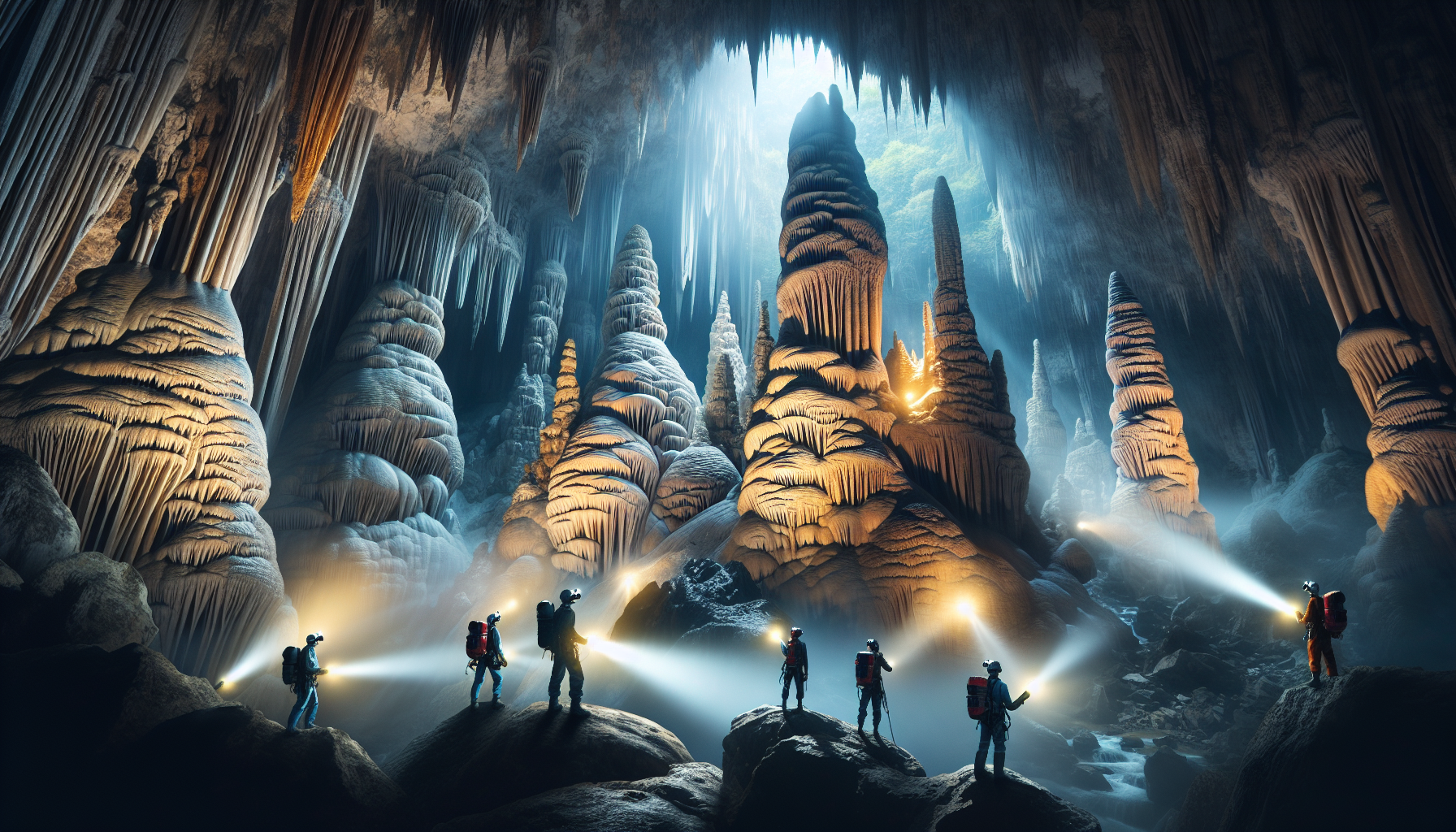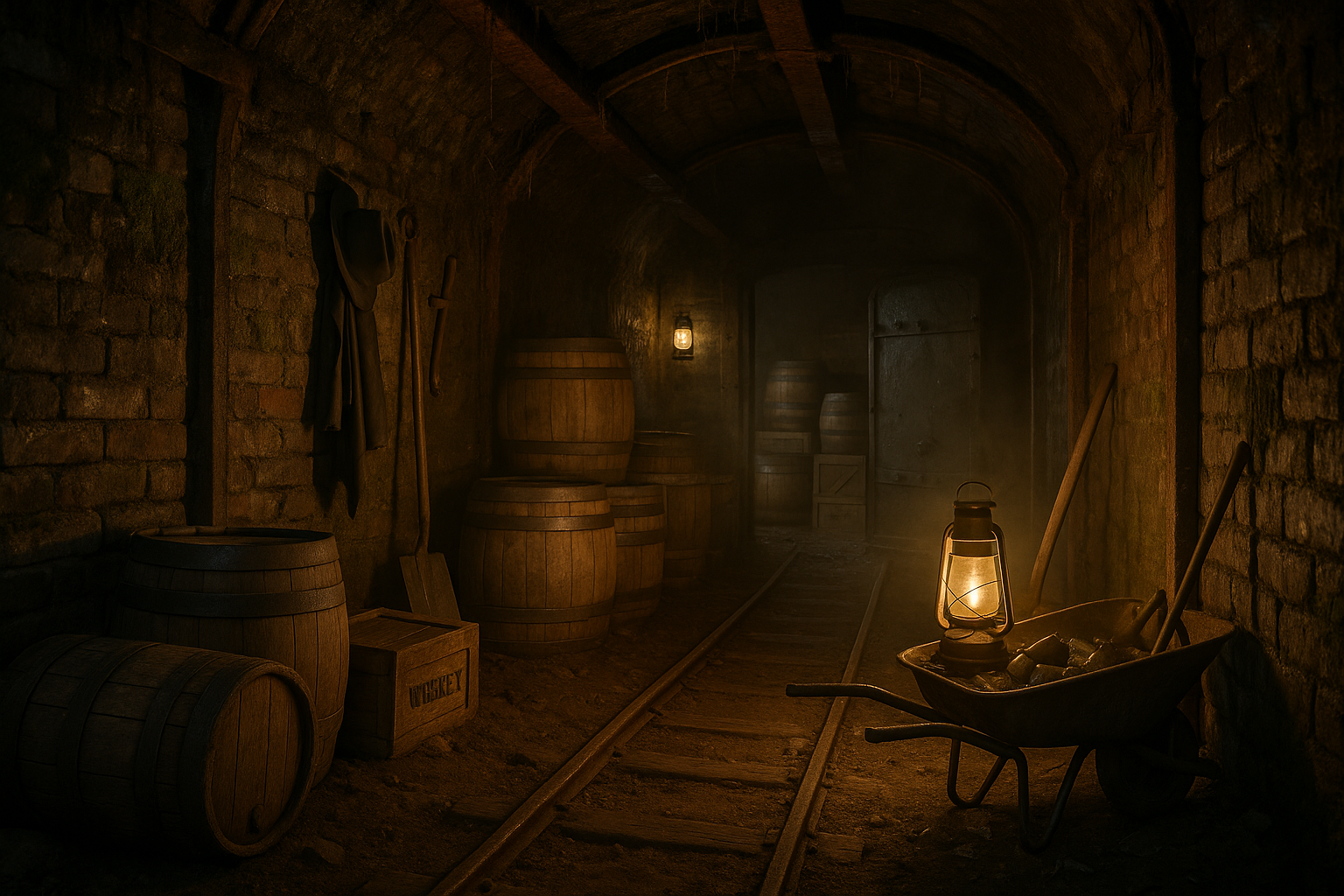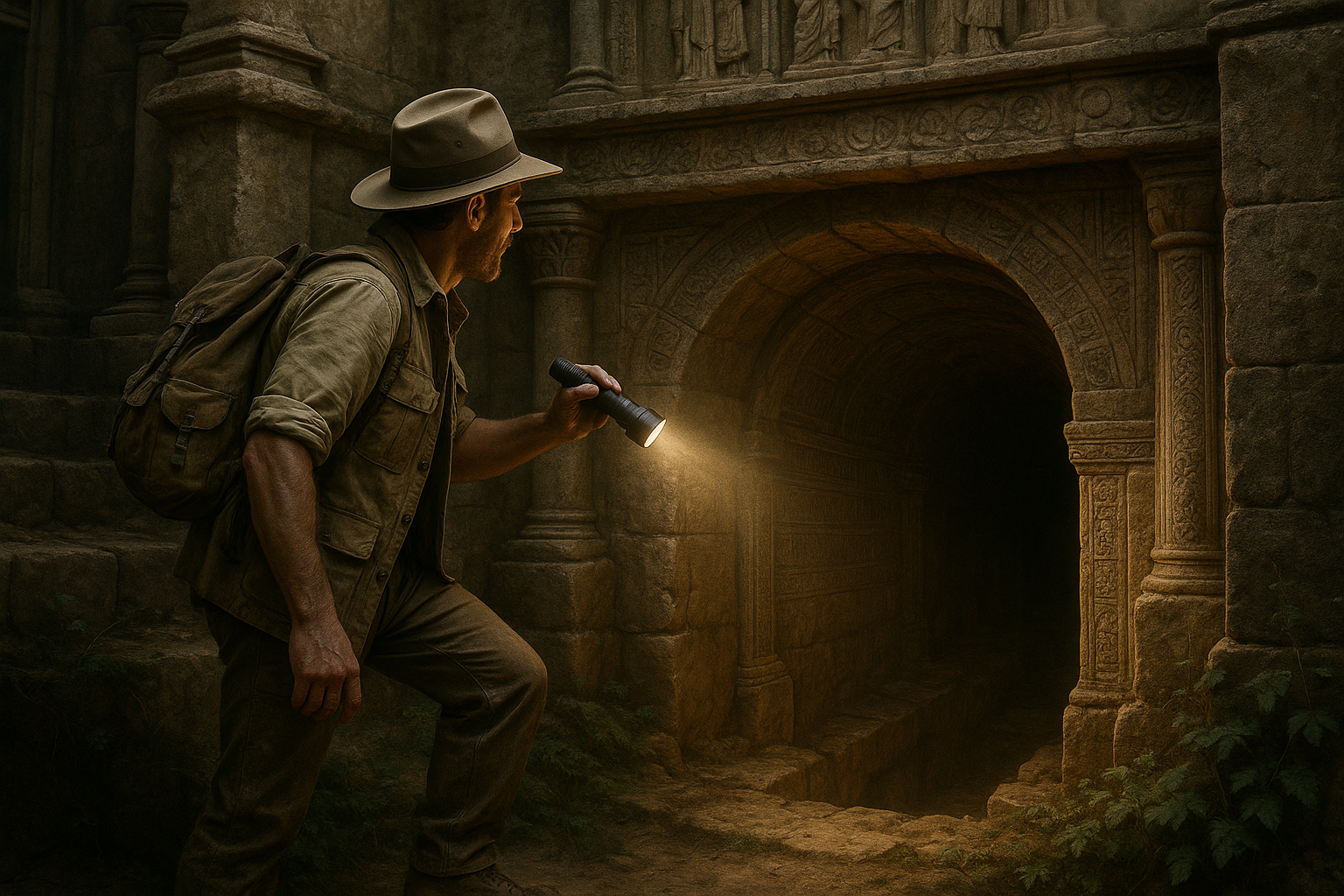Beneath our feet lies a hidden world, one that remains shrouded in mystery and often escapes our everyday thoughts. Yet, this subterranean realm holds the very foundations of our planet’s landscapes, ecosystems, and even human history. As we walk on solid ground, it’s easy to forget the vast and intricate network of structures that reside below. These underground wonders range from natural formations, such as vast cave systems and deep-sea trenches, to human-made marvels like ancient catacombs and modern subways. Each of these subterranean structures tells a unique story about the Earth’s past, present, and future, inviting us to delve deeper into their mysteries and understand their profound impact on our world.
Imagine standing on the edge of a yawning cave entrance, feeling the cool air waft from its depths, or descending into a bustling urban metro, where the hum of the city above is replaced by a symphony of mechanical sounds. These experiences offer just a glimpse of the massive underground environments that exist beneath us. They are not merely geological curiosities but pivotal elements that shape our planet’s climate, influence biodiversity, and even affect our daily lives. In this exploration, we’ll journey through some of the most awe-inspiring and significant subterranean structures. From the labyrinthine tunnels of mammoth caves to the strategic depths of wartime bunkers, each section of this article will peel back layers of earth to reveal the secrets lying below.
Throughout this exploration, we’ll uncover how these underground structures have shaped human civilization, inspired legends and myths, and posed both challenges and opportunities in the modern age. We’ll examine the role of underground aquifers in sustaining life, the ecological importance of subterranean habitats, and the fascinating ways in which humans have adapted these spaces for survival and advancement. Our journey will also touch on the technological advancements that have allowed us to probe deeper than ever before, revealing insights that are reshaping our understanding of what lies beneath. As we embark on this journey, prepare to see the ground beneath your feet in an entirely new light—one filled with wonder, discovery, and the promise of uncovering the unknown 🌍.
Introduction to the Enigmatic World Below
The Earth’s surface is just a thin veneer over an incredibly complex and largely unexplored subterranean world. From vast cave systems to intricate networks of tunnels, these underground structures have fascinated scientists, adventurers, and archaeologists alike. The deeper we delve, the more we uncover about the geological processes that shape our planet and the ancient histories buried within.
As we explore these structures, we gain insight into not only Earth’s geological history but also the ways in which human civilizations have utilized these spaces. From ancient catacombs to modern-day subway systems, the underground has always played a pivotal role in human development and survival. Below, we’ll dive into some of the most intriguing and expansive underground structures that challenge our understanding of what lies beneath our feet.
In this journey, we’ll explore both natural formations and man-made constructions, highlighting their significance and the mysteries they hold. From the world’s deepest caves to underground cities, the world below is as diverse and dynamic as the surface above. 📜
The Mysteries of Natural Underground Formations
Nature has sculpted an astonishing array of subterranean landscapes over millions of years. Caves, for example, are among the most accessible natural underground structures, offering glimpses into the planet’s geological past. These formations are created by various processes, including erosion, volcanic activity, and the dissolution of soluble rocks. The most famous among them is perhaps the Mammoth Cave in Kentucky, USA, which holds the title of the longest cave system in the world.
These natural structures are more than just geological curiosities; they are ecosystems in their own right. Within their dark confines, unique life forms have adapted to the absence of sunlight, evolving into creatures unlike any found on the surface. Studying these organisms provides valuable insights into evolution and survival in extreme environments. Additionally, caves often preserve records of past climates, offering scientists clues about how Earth’s climate has changed over millennia.
Let’s not forget the striking beauty of these underground wonders. Stalactites and stalagmites create breathtaking spectacles, and in some places, bioluminescent organisms cast an ethereal glow. Exploring these caves can feel like stepping into another world, where every twist and turn reveals new marvels. For those interested in venturing into this subterranean realm, the video “Exploring the World’s Largest Cave – Son Doong Cave” by National Geographic provides a captivating look at one of the most awe-inspiring cave systems on Earth.
Man-Made Marvels: The Engineering Feats Beneath Our Feet
Human ingenuity has long sought to conquer the depths below, resulting in incredible feats of engineering. From the ancient catacombs of Paris to modern subway systems, these structures demonstrate our ability to manipulate and utilize the underground for various purposes. Each of these constructions tells a story of human adaptation, resourcefulness, and the quest for progress.
One of the most remarkable examples of underground engineering is the Channel Tunnel, also known as the “Chunnel,” which connects England and France beneath the English Channel. This 50.45-kilometer tunnel represents a monumental achievement in civil engineering, providing a crucial link for transportation and commerce between two major European nations. The Chunnel stands as a testament to what can be accomplished with determination, collaboration, and advanced technology.
In a similar vein, urban underground systems like the Moscow Metro are not only vital for city infrastructure but also serve as cultural landmarks. The Moscow Metro, with its ornate stations and intricate designs, is often referred to as “the People’s Palace.” These systems highlight the dual function of underground spaces as both practical and artistic endeavors, merging functionality with aesthetic appeal.
For a fascinating look at the construction and impact of these underground marvels, watch the video “Inside the World’s Largest Subway System – NYC’s Hidden Infrastructure” by Bloomberg Quicktake. This exploration sheds light on the complexities of building and maintaining these essential networks beneath bustling cities. 🚇
The Hidden Histories of Underground Cities and Tunnels
Throughout history, human civilizations have turned to the underground for refuge, storage, and survival. Underground cities, such as Derinkuyu in Turkey, are remarkable examples of how people have utilized these spaces to create entire communities beneath the Earth’s surface. These cities were carved out of soft volcanic rock, providing shelter from invaders and harsh climates.
Derinkuyu, capable of housing thousands of people, features living quarters, storage rooms, and even chapels, all connected by a labyrinthine network of tunnels. These underground cities highlight the resilience and ingenuity of ancient societies, demonstrating their ability to adapt to challenging environments. Archaeologists continue to uncover new sections of these cities, revealing more about the daily lives and cultures of their inhabitants.
In modern times, tunnels serve various purposes, from transportation to military operations. The Cu Chi Tunnels in Vietnam, for example, were used by Viet Cong soldiers as a strategic advantage during the Vietnam War. These tunnels allowed for stealthy movement and provided refuge, illustrating the tactical significance of underground spaces in warfare.
For a deeper understanding of the role and history of these underground cities and tunnels, check out the video “Secrets of the Underground – Ancient Megastructures” by Science Channel. This exploration dives into the engineering and historical aspects of these fascinating subterranean worlds. 🏛️
Comparative Analysis of Underground Structures
When examining the various underground structures around the world, it’s essential to compare their features, purposes, and significance. The table below provides a comparative analysis of some of the most notable natural and man-made underground structures:
| Structure | Type | Location | Significance |
|---|---|---|---|
| Mammoth Cave | Natural | USA | Longest cave system in the world, unique ecosystems |
| Channel Tunnel | Man-Made | England/France | Engineering marvel, connects two countries |
| Derinkuyu | Man-Made | Turkey | Ancient underground city, historical significance |
| Son Doong Cave | Natural | Vietnam | Largest cave in the world, unique geological features |
As we analyze these structures, we see a tapestry of human innovation and natural wonder. Each underground space holds a unique story, offering insights into the past and lessons for the future. Whether crafted by natural forces or human hands, these subterranean realms continue to captivate and inspire.
The Role of Technology in Exploring the Subterranean World
In recent years, technological advancements have revolutionized our ability to explore and understand underground structures. From sophisticated mapping techniques to advanced robotics, these tools have opened new avenues for discovery and research. For example, LiDAR (Light Detection and Ranging) technology allows scientists to create detailed 3D maps of cave systems, revealing previously hidden features and passages.
Similarly, autonomous drones equipped with cameras and sensors can navigate challenging environments, capturing data and images that were once inaccessible. These technologies not only enhance our understanding of existing structures but also aid in the discovery of new ones. As we continue to innovate, the potential for uncovering more about the subterranean world grows exponentially.
For a glimpse into how technology is transforming cave exploration, watch the video “Cave Diving with a Robot: Exploring the Cenotes of Mexico” by Verge Science. This video highlights the role of technology in pushing the boundaries of exploration and uncovering the secrets hidden beneath the surface. 🤖
Conclusion
### Conclusion: Unveiling the Hidden World Beneath Our Feet
In our exploration of the vast underground structures that shape our planet, we’ve embarked on a journey that extends beyond the surface of our everyday lives. This article delved into the intricacies of the subterranean world, uncovering the geological marvels and mysteries that lie beneath our feet. Let’s recapitulate the key points we covered, emphasizing the profound importance of understanding these hidden realms.
We began by examining the formation and significance of underground structures, from natural caves to man-made tunnels, each with its unique history and contribution to Earth’s geology. We explored how these structures serve as reservoirs for water and minerals, vital to sustaining life and economic development. These underground networks also play a critical role in maintaining Earth’s environmental balance, acting as conduits for aquifers and influencing seismic activity.
The article then shed light on the technological advancements that have revolutionized our ability to explore and understand the underground world. From cutting-edge geophysical imaging techniques to remote sensing technologies, we’ve seen how modern science is unveiling the secrets of these hidden domains with unprecedented clarity and precision.
In addition, we discussed the role of these subterranean environments in our cultural and historical contexts. Many societies have harnessed the underground for shelter, worship, and burial, creating a rich tapestry of human interaction with these spaces. The stories embedded within these environments offer invaluable insights into our past and underscore the timeless relationship between humanity and the Earth.
One of the most intriguing aspects we explored was the potential for future innovations and discoveries within these underground structures. As urbanization continues to expand, the need for sustainable living solutions becomes more pressing. The underground offers promising opportunities for energy-efficient infrastructure, resilient against the challenges of climate change and urban sprawl.
Moreover, our journey highlighted the ecological importance of subterranean ecosystems. These habitats, often overlooked, are home to unique biodiversity, adapted to life in darkness and isolation. Understanding and preserving these ecosystems is crucial for maintaining ecological balance and protecting species that may hold the key to scientific breakthroughs.
As we conclude this exploration, it’s vital to recognize the interconnectedness of the underground world with our daily lives. The structures beneath us are not just geological formations; they are integral components of our planet’s complex system, influencing everything from water resources to climate patterns.
The importance of this subject cannot be overstated. By deepening our understanding of these underground structures, we empower ourselves to make informed decisions about resource management, urban planning, and environmental conservation. The knowledge gained from studying these hidden realms has the potential to transform our approach to some of the most pressing challenges facing humanity today.
In closing, I invite you to reflect on the wonders of the world below us and consider how you can contribute to this field of exploration. Whether through academic study, environmental advocacy, or simply sharing this knowledge with others, you have the power to make a difference. Let’s continue to foster curiosity and respect for the natural world, embracing the mystery and potential that lie beneath the surface.
I encourage you to leave your thoughts and insights in the comments section. Share this article with others who may be intrigued by the secrets of the subterranean world. By spreading awareness and fostering dialogue, we can collectively advance our understanding and appreciation of these massive underground structures.
For those interested in further exploration, numerous resources and research studies are available online, such as US Geological Survey and National Geographic, providing a wealth of information on geological and ecological studies of underground environments.
Together, let’s embark on this journey of discovery, uncovering the wonders and mysteries that lie beneath our feet, and ensuring that these incredible structures continue to inspire and sustain us for generations to come. 🌍🔍
Thank you for joining us on this exploration, and let’s keep the conversation going!

Toni Santos is a visual storyteller and artisan whose work explores the quiet power of what lies beneath. With a deep fascination for subterranean and hidden architecture, Toni uncovers the layers, voids, and forgotten spaces that shape our built environment from the shadows.
His art is a journey through the unseen — from ancient underground chambers to sealed passageways, service tunnels, and foundations buried in time. Each creation tells a story of silence, secrecy, and structure — revealing how absence and concealment can be just as meaningful as what’s visible above ground.
Whether working through visual compositions, architectural studies, or symbolic handcrafted pieces, Toni captures the soul of hidden spaces. His work bridges art and archaeology, blending design with discovery. Trained in visual design and traditional techniques, Toni creates with intention. His pieces don’t just depict — they interpret, inviting viewers to rethink what space, memory, and architecture mean when they’re hidden from view.
As the creative force behind Vizevex, Toni shares this perspective through curated visual narratives, symbolic collections, and interpretive essays that give voice to the quiet geometries beneath our feet.
His work is a tribute to:
The mystery of spaces built to be forgotten
The symbolism embedded in foundations, voids, and passageways
The timeless connection between human intention and hidden structure
Whether you’re an artist, an urban explorer, or someone fascinated by the unseen frameworks that support our world, Toni invites you into a realm where architecture becomes myth — one corridor, one layer, one buried story at a time.





